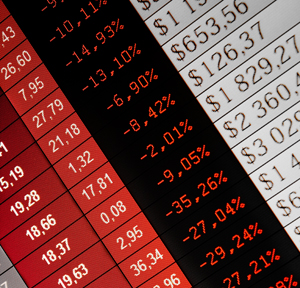Statistics
Exchange-Traded Fund Usage On The Rise Among RIAs - Data

Exchange-traded fund assets rose by 17 per cent to $2.08 trillion in 2014, with RIAs emerging as the leading distribution channel, accounting for $413 billion in assets, new data shows.
Global exchange-traded fund assets rose by 17 per cent to $2.08 trillion in 2014, with RIAs emerging as the leading distribution channel, accounting for $413 billion in assets, new data shows.
“ETF assets across all channels increased by 17 percent reaching $2.08 trillion in 2014. Overall fund and ETF assets under management increased by 12 percent in 2014 and we saw independent broker-dealers and registered investment advisors continue to outpace wirehouses – a trend that we expect to continue in 2015,” said Frank Polefrone, senior vice president of Access Data, a Broadridge Financial Solutions company. “As part of the investor migration to independent advice models, we are also seeing an increased use of passive products among financial intermediaries, especially RIAs as they increasingly utilize ETFs.”
Meanwhile, the passive/actively managed mix among third-party distributors rose from 27/73 per cent at the end of 2013 to 29/71 per cent by the end of the 2014, Broadridge found. The largest users of passive products within the retail channels were RIAs, whose usage rose from 31 to 34 per cent in 2014 compared to 2013.
By contrast, the independent broker-dealer channel was essentially unchanged in its usage of passive products, with a passive/managed mix of 17/83 per cent in 2014. On the institutional side, the largest user of passive products were private banks, which last year increased usage to 45 per cent in 2014 from 44 per cent in 2013.
Daniel Goldstein of Manchester Capital Management agrees that investment advisors are working with sophisticated investors to increasingly use ETFs, index funds and passive management in some asset classes where most would agree that active management does not consistently deliver outperformance, justifying the increased cost of active management.
However, “there will be an ongoing and heated debate for quite some time over where the lines are drawn and when to use SMA active managers versus when to use ETFs or other alternatives to both,” Goldstein said.
Broadridge’s data also shows 19 per cent growth in passive products across third-party distribution channels, compared to 12 per cent growth of actively-managed products.
“The increased usage of passive products by financial intermediaries differs based on the type of firm. RIAs have a higher usage of ETFs and index mutual funds, while traditional broker dealers’ usage of passive products has not changed to any great degree,” said Polefrone.
There has certainly not been a shortage of data on the ETF industry in recent weeks. Only yesterday, for example, did Family Wealth Report report that the Canadian ETF sector experienced significant growth in 2014, with more than C$10.3 billion in inflows – double that of 2013. Meanwhile, PricewaterhouseCoopers has predicted that investments channelled via ETFs are expected to expand at an annual rate of 6 per cent to reach $100 trillion by 2020, with insurers, pension funds and hedge funds helping to propel growth. Europe and the US are expected to continue to dominate the ETF landscape although the highest rates of growth are expected to be found in the less mature markets of Asia, Latin America, the Middle East and Africa, PwC's report said.
